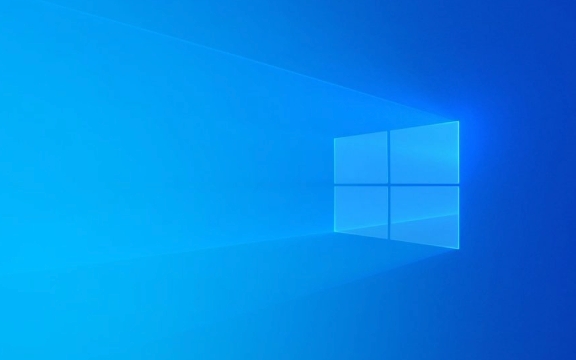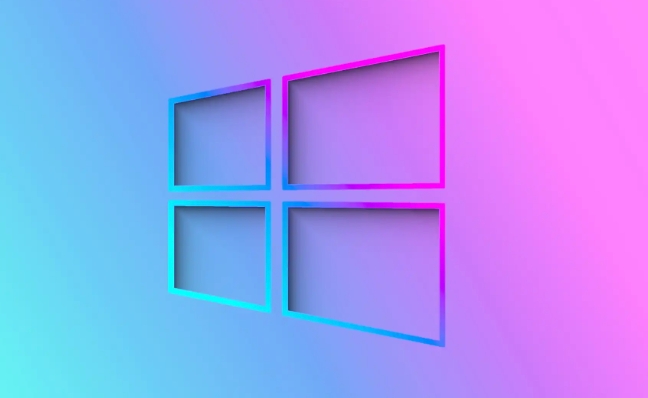To enable audio enhancements in Windows, right-click the speaker icon, select "Sounds", go to the "Playback" tab, double-click your default device, and access the "Enhancements" tab. 2. Uncheck "Disable all enhancements" and enable specific effects like Bass Boost or Loudness Equalization to improve sound quality. 3. Use advanced software such as Realtek Audio Console, Dolby Atmos for Headphones, or DTS Audio Processing if available, by installing and configuring them via the Start Menu or Microsoft Store. 4. Adjust communication settings in the "Communications" tab to manage audio during calls, and ensure system-level enhancements do not conflict with app-specific audio settings. 5. If enhancements are missing or cause issues, update your audio driver or disable problematic effects, as support depends on hardware and drivers. Proper configuration can significantly enhance your listening experience based on your device and usage.

Setting up audio enhancements in Windows can help improve your listening experience—whether you're watching videos, playing games, or making calls. These enhancements include bass boost, virtual surround sound, equalization, and more, depending on your audio hardware and drivers. Here’s how to enable and configure them properly.

1. Access Sound Settings in Windows
First, open the audio control panel:
- Right-click the speaker icon in the taskbar (bottom-right corner).
- Select "Sounds" or "Open Sound settings".
- In the Settings window, scroll down and click "Sound Control Panel" on the right.
- In the new window, go to the "Playback" tab.
- Double-click your default playback device (usually Speakers or Headphones).
2. Enable and Configure Audio Enhancements
Once you’re in the properties window for your audio device:

-
Go to the "Enhancements" tab.
?? If you don’t see this tab, your audio driver may not support enhancements or they might be managed through a separate app (like Realtek Audio Console or Dolby Access).

-
You’ll see a list of available enhancements such as:
- Bass Boost
- Virtual Surround
- Loudness Equalization
- Room Correction
- Environmental Effects
Check the box for "Disable all enhancements" — uncheck it to allow enhancements.
-
Then, select individual effects you want to enable.
- For example: Check "Bass Boost" for deeper lows, or "Loudness Equalization" to balance volume across frequencies (helpful for older media).
? Tip: Some users find "Loudness Equalization" especially useful for making quiet sounds clearer without increasing overall volume.
3. Use Advanced Audio Software (If Available)
Many PCs come with manufacturer-specific audio tools that offer more control:
- Realtek Audio Console: Common on desktops and laptops. Offers EQ presets, spatial sound, and jack configuration.
- Dolby Atmos for Headphones: Available in Microsoft Store. Provides immersive 3D audio (great for gaming and movies).
- DTS Audio Processing: Found on some gaming laptops.
- Nahimic, Sonic Studio, or Microsoft Spatial Sound: Brand-specific apps with advanced tuning.
To use these:
- Open Start Menu and search for the app by name.
- Install from Microsoft Store if not already present (e.g., Dolby Atmos).
- Follow in-app setup to choose speaker/headphone type and enable spatial audio or EQ.
4. Adjust Communication and App-Specific Audio
Windows also allows audio tuning during communication (like calls):
- Back in the Sound Control Panel, go to the "Communications" tab.
- Choose what happens when Windows detects communication activity:
- Reduce the volume of other sounds (by 80%)
- Mute other sounds
- Do nothing
This helps prevent audio conflicts during Zoom, Teams, or Discord calls.
Also, some apps (e.g., Spotify, games) have their own audio settings. Make sure enhancements aren’t conflicting between system and app levels.
Final Notes
- Not all audio drivers support enhancements — older or generic drivers may lack these features.
- If enhancements cause distortion or delay, disable them.
- Updating your audio driver via Device Manager or your PC manufacturer’s website can unlock more options.
Basically, it’s about unlocking what your hardware can do and fine-tuning it to your preference. Start with loudness equalization or bass boost — small tweaks can make a noticeable difference.
The above is the detailed content of How to set up audio enhancements in Windows. For more information, please follow other related articles on the PHP Chinese website!

Hot AI Tools

Undress AI Tool
Undress images for free

Undresser.AI Undress
AI-powered app for creating realistic nude photos

AI Clothes Remover
Online AI tool for removing clothes from photos.

Clothoff.io
AI clothes remover

Video Face Swap
Swap faces in any video effortlessly with our completely free AI face swap tool!

Hot Article

Hot Tools

Notepad++7.3.1
Easy-to-use and free code editor

SublimeText3 Chinese version
Chinese version, very easy to use

Zend Studio 13.0.1
Powerful PHP integrated development environment

Dreamweaver CS6
Visual web development tools

SublimeText3 Mac version
God-level code editing software (SublimeText3)

Hot Topics
 How to change the system display language for all users in Windows
Jul 31, 2025 am 08:18 AM
How to change the system display language for all users in Windows
Jul 31, 2025 am 08:18 AM
InstallthedesiredlanguagepackviaSettings→Time&Language→Language®ion,ensuring"SetasmyWindowsdisplaylanguage"isselected.2.Changethesystemdisplaylanguageinthesamemenuandrestart.3.OpenControlPanel→Region→Administrativetab,click"
 How to reset the Microsoft Store in Windows
Jul 31, 2025 am 08:23 AM
How to reset the Microsoft Store in Windows
Jul 31, 2025 am 08:23 AM
ResettheMicrosoftStoreviaSettingsbygoingtoApps>Installedapps,selectingMicrosoftStore,clickingAdvancedoptions,thenRepairandResetifneeded.2.Ifthatfails,re-registertheStoreusingPowerShellasadminwiththecommand:Get-AppXPackage-NameMicrosoft.WindowsStor
 How to install Windows on a Mac without Boot Camp
Jul 31, 2025 am 11:58 AM
How to install Windows on a Mac without Boot Camp
Jul 31, 2025 am 11:58 AM
Without BootCamp, installing Windows on Mac is feasible and works for different chips and needs. 1. First check compatibility: The M1/M2 chip Mac cannot use BootCamp, it is recommended to use virtualization tools; the Intel chip Mac can manually create a boot USB disk and install it in partition. 2. Recommended to use virtual machines (VMs) for M1 and above chip users: Windows ISO files, virtualization software (such as ParallelsDesktop or UTM), at least 64GB of free space, and reasonably allocate resources. 3. IntelMac users can manually install it by booting the USB drive: USB drive, WindowsISO, DiskU is required
 How to reset the TCP/IP stack in Windows
Aug 02, 2025 pm 01:25 PM
How to reset the TCP/IP stack in Windows
Aug 02, 2025 pm 01:25 PM
ToresolvenetworkconnectivityissuesinWindows,resettheTCP/IPstackbyfirstopeningCommandPromptasAdministrator,thenrunningthecommandnetshintipreset,andfinallyrestartingyourcomputertoapplychanges;ifissuespersist,optionallyrunnetshwinsockresetandrebootagain
 How to install Windows on a Mac
Jul 31, 2025 am 10:07 AM
How to install Windows on a Mac
Jul 31, 2025 am 10:07 AM
ForIntel-basedMacs,useBootCampAssistanttocreateadual-bootsystemwithWindowsbypreparingaUSBdrive,downloadingaWindowsISO,partitioningthedisk,andinstallingWindowsalongsidemacOSwithsupportdrivers.2.ForAppleSiliconMacs(M1/M2/M3),usevirtualizationsoftwareli
 Step-by-step guide to installing Windows from an ISO file
Aug 01, 2025 am 01:10 AM
Step-by-step guide to installing Windows from an ISO file
Aug 01, 2025 am 01:10 AM
DownloadtheWindowsISOfromMicrosoft’sofficialsite.2.CreateabootableUSBusingMediaCreationToolorRufuswithaUSBdriveofatleast8GB.3.BootfromtheUSBbyaccessingthebootmenuoradjustingBIOS/UEFIsettings.4.InstallWindowsbyselectingcustominstallation,choosingtheco
 A guide to custom Windows installation options
Aug 01, 2025 am 04:48 AM
A guide to custom Windows installation options
Aug 01, 2025 am 04:48 AM
Choose"Custom:InstallWindowsonly(advanced)"forfullcontrol,asitallowsacleaninstallthatremovesoldissuesandoptimizesperformance.2.Duringsetup,managepartitionsbydeletingoldones(afterbackingupdata),creatingnewpartitions,formatting(usingNTFS),ors
 How to manage AppLocker policies in Windows
Aug 02, 2025 am 12:13 AM
How to manage AppLocker policies in Windows
Aug 02, 2025 am 12:13 AM
EnableAppLockerviaGroupPolicybyopeninggpedit.msc,navigatingtoApplicationControlPolicies,creatingdefaultrules,andconfiguringruletypes;2.Createcustomrulesusingpublisher,path,orhashconditions,preferringpublisherrulesforsecurityandflexibility;3.Testrules







